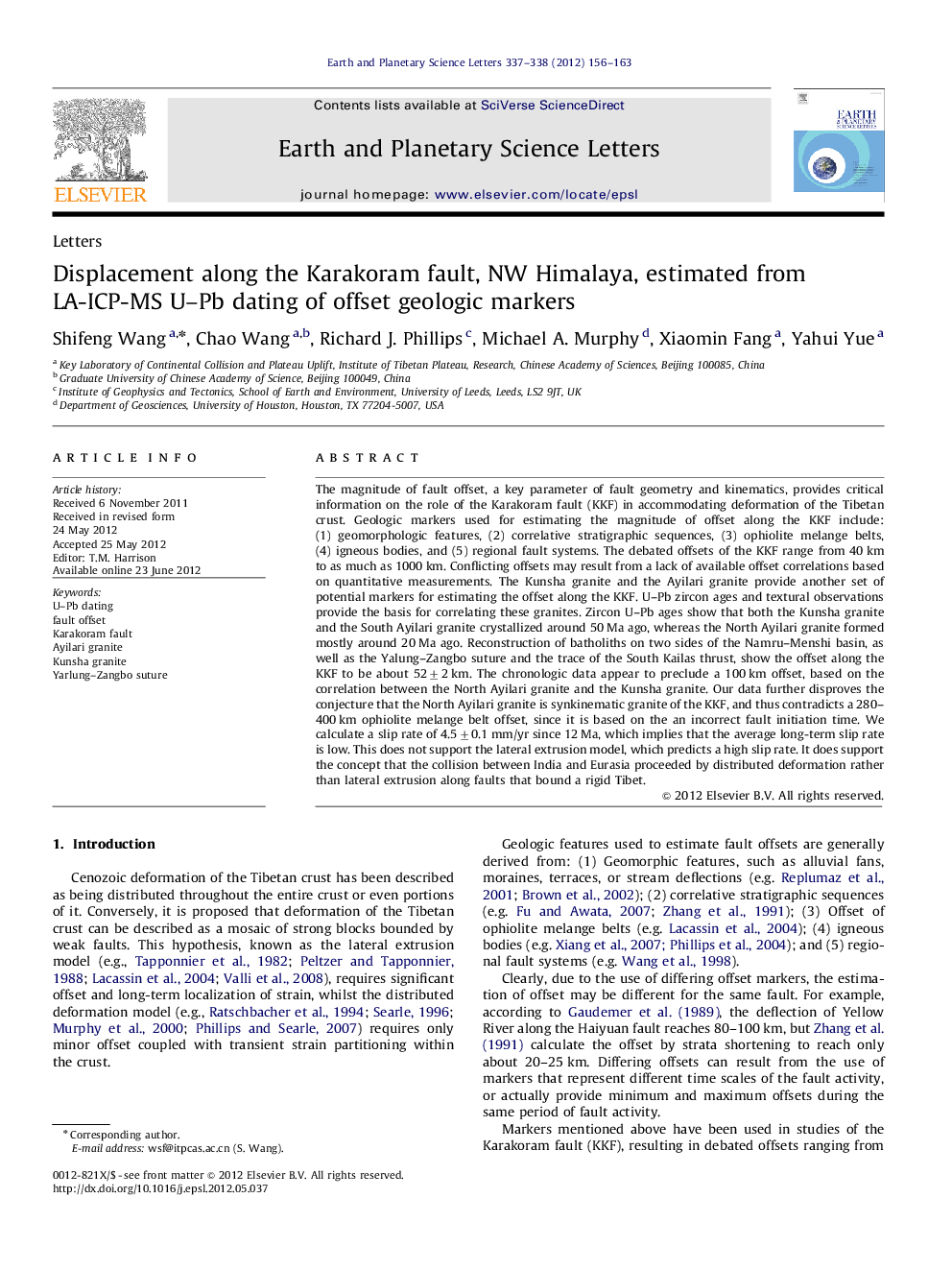| Article ID | Journal | Published Year | Pages | File Type |
|---|---|---|---|---|
| 4677451 | Earth and Planetary Science Letters | 2012 | 8 Pages |
The magnitude of fault offset, a key parameter of fault geometry and kinematics, provides critical information on the role of the Karakoram fault (KKF) in accommodating deformation of the Tibetan crust. Geologic markers used for estimating the magnitude of offset along the KKF include: (1) geomorphologic features, (2) correlative stratigraphic sequences, (3) ophiolite melange belts, (4) igneous bodies, and (5) regional fault systems. The debated offsets of the KKF range from 40 km to as much as 1000 km. Conflicting offsets may result from a lack of available offset correlations based on quantitative measurements. The Kunsha granite and the Ayilari granite provide another set of potential markers for estimating the offset along the KKF. U–Pb zircon ages and textural observations provide the basis for correlating these granites. Zircon U–Pb ages show that both the Kunsha granite and the South Ayilari granite crystallized around 50 Ma ago, whereas the North Ayilari granite formed mostly around 20 Ma ago. Reconstruction of batholiths on two sides of the Namru–Menshi basin, as well as the Yalung–Zangbo suture and the trace of the South Kailas thrust, show the offset along the KKF to be about 52±2 km. The chronologic data appear to preclude a 100 km offset, based on the correlation between the North Ayilari granite and the Kunsha granite. Our data further disproves the conjecture that the North Ayilari granite is synkinematic granite of the KKF, and thus contradicts a 280–400 km ophiolite melange belt offset, since it is based on the an incorrect fault initiation time. We calculate a slip rate of 4.5±0.1 mm/yr since 12 Ma, which implies that the average long-term slip rate is low. This does not support the lateral extrusion model, which predicts a high slip rate. It does support the concept that the collision between India and Eurasia proceeded by distributed deformation rather than lateral extrusion along faults that bound a rigid Tibet.
► The Kunsha and Ayilari granites provide marker for offset correlation of the KKF. ► Offset along the KKF is ∼52 km got by the age correlation of the granite marker. ► Small-scale offset suggests the KKF behaved in a distributed deformation style.
